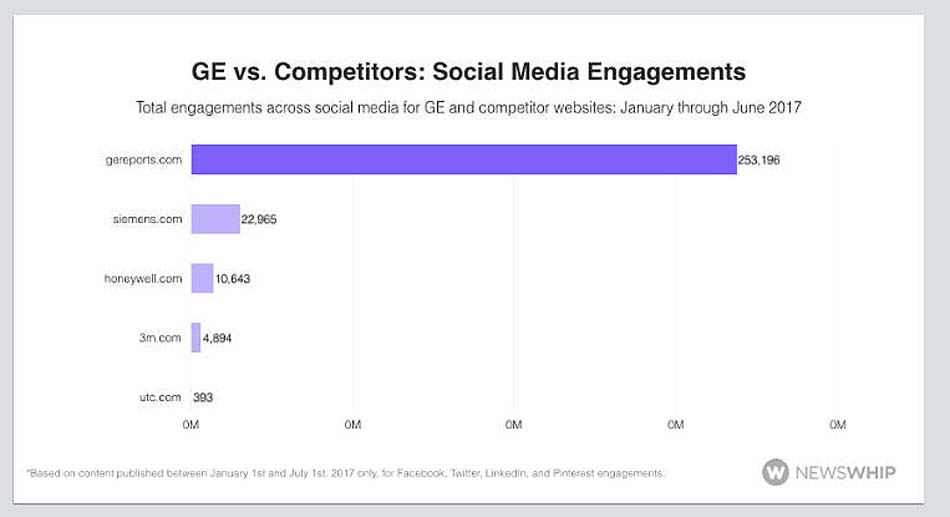Editorial Strategy? Audience Attuned
Narrative has been “the new black” for some time. Typically the mastery of writers, journalists, marketers or brand architects. In today’s market of socially driven exchange, narrative has taken on an entirely new role. From content development, to company design, to influencer marketing, to socially driven customer campaigns – narrative reflects the soul of organizations, service bureaus, brands, products or new startups that tend to stand out. More subtle, is how firms build in editorial strategy as a core element of practice to embrace feedback, customer relationship management tactics and narrative designed around the audiences targeted or communities where a clear demand has been expressed or established.
This established demand? For firms to really succeed and scale, a consistent focus on the audience to get a feel for their take, preferences or stress points means this is reverse engineered. Starting with the audience or community; editorial practice and content strategy reflected in areas the targeted audience or folks with the most to gain are already curious, impacted by, immersed in or those that may frequent and value your unique appeal.
A lot of emphasis over recent years is being placed on narrative as an expansion of brand architecture. If that sounds like jargon, it may help to think of this as a version of Maslow’s hierarchy of needs. This hierarchy of Maslow’s five layers — in context of editorial — places a value proposition at the bottom layer of the pyramid, sequential layers scaling out of this. Essentially these layers create a “narrative” stack, with layers, values and audience-focused principles that align around audience needs (demand or benefit). What makes this very powerful is that it is all actionable and measureable.
Editorial as Architecture
Understanding narrative structure and how it inspires editorial — in the terms of what an audience likely already understands or appreciates — is framed from the perspective of “those served” (the audience). This is a multi-billion dollar industry, this science of “the path to purchase” across markets and verticals. The game advantage in shaping editorial in a proactive and thoughtful way is a pull strategy. This honors a big shift in the power of social and relational networks to tap into the audience + the entire enterprise, across divisions and locations or nested within a small town through smart cross-collaboration. This relational practice is wired with audience input through out the customer life cycle to empower a shared narrative, becoming part of a product or initiative’s signature. This ups the case for adoption and understanding of the power of customer relationship management (CRM) programs, or for startups in early stage development, when made into a practical framework that can be monitored and baked in to how initiatives launch to appeal to market segments or specific targeted audience affinity groups.
Boot Leg Version?
No need to delay in starting a practice of responsive editorial, attuned and reflective. Audiences are becoming more and more comfortable and authentic, in their capacity to weigh in. Distilled through surveys, comments on your website, or gathered at events or feedback forms offered at the end of events or captured in other ways (twitter, mail, response card, etc.) are powerful ways to give audience a voice back into product or service design.
Guiding editorial priorities, its also easy to incorporate the age old practice of “tabling” – places where your audience (current or prospective) hangs or special/affinity events — that are strategic to show up at — to talk with people about what they care about related to your product or service or campaign. With questions prepared for information gathering in advance ideally collaboratively vetted, or that are developed out of interactions with people – in real life (IRL).
Reverse Engineer Listening
For larger narrative programs or brand development, companies or publishing outfits that produce information products? The simple practice of joining in, collaboratively, in support of other organizations that also contribute to the area your content or product supports or reports or investigates is a bridge of respect and deliberative practice. The idea of starting with the audience, where the audience sits from their vantage point is still relatively untried in an organic in lieu of a more staged, public relations kind of way. Its interesting what a difference it can make; understanding the value of a product or service (e.g. marketing) versus selling a company’s view on how they’d like to be perceived (e.g. public relations).
For a few examples on content producers: News publishers such as Voice of San Diego or Texas Tribune, have been leaders in the emerging “new school” news market generating entire service lines through events, membership-driven or subscriber-models with lots of perks. Xconomy is another example of a niche content product, focused on specific topics with a clear business model based on editorial value created and shared around networks and expertise. Town halls are a long standing method of getting out to talk with the community. We have yet to see business models scaling out of existing community built businesses, education oriented or nonprofit groups as convener driving or informing the editorial process. Mining information from a localized axis, content product or news and public good media or brands that aim to serve local markets where there is mutual synergy to advance public interest paired with economic sustainability. In these cases we see community and business gain a great deal by having the locals report in, in a collaborative, localized or place based structure. Solutions Journalism is moving toward this, but there is still a “reporting to communities” from the era of pre-digital broadcast newsrooms, that inadvertently puts a stage between itself and audience. Traditionally this hails from a legacy print news model versus being informed by those living locally or groups who work daily to empower or act on the behalf of community.
Purpose Driven? Break down the silos
Breaking down these silos holds tremendous value in identifying all the ways information may better sustain and serve purpose-driven narratives. In the context of news publishers, purpose-driven public good or civic, civil access to information that guides individuals understanding of products, places, events or news that impacts their lives. Defining how a product empowers its audience through its editorial narrative architecture, how its been informed, sourced or funded simply becomes part of its product structure.
A civic focused example of this is the Citizen Initiative Review. Established in the State of Oregon in 2011, this model is now replicated across a number of states. As these modes of narrative and relating are piloted, this deliberative process has been adapted for the classroom.
Bringing it back to companies or startups, the idea of editorial, narrative and its architecture have begun to bridge audiences with brands in ways we’ve not experienced before. Coca-Cola, Google or GE (see graphic below) all with enormous brand value. All developing narrative and editorial networks, very much in the way that newsrooms have served for generations. Only corporate content as a by-product reflecting audience affinity or attributes aligned with amplification of brand value, as a means to deepen market share for share holders. Respectfully leading us to ask, does that mean in corporate media or a brand-driven context the audience becomes bycatch? Corporate marketing groups are seeing big upside in coming in to fill in content demand for audiences. There is a significant shift in marketing budgets, to align content with audience demand pushing out across social channels where source is obscure or has yet to be differentiated in ways the audience can immediately qualify.

Increasingly the line all but indistinguishable between information, traditional news providers, brands, social channels and meetups, hangouts, and the content creation of all this in aggregate. For the businesses, startups or media leaders who bring forward the voices, soul and well being of customers, citizens or communities there is great potential for both market share and revenue, simply by tuning in. Good content or relevant narrative births an editorial program that scales over time built to suit people where they are. To illuminate the different ways, products, services or transportation will get them to where they are going. The strategy is to ensure there is a specific set of practices that reflect your audience that allows them to see themselves in a way they directly identify with. The more concrete that practice, the more accurate metrics are attuned to offer a beat that resonates with revenue. Editorial designed with responsive engagement powers an architecture that reflects the unique soul of your audience in a way they can relate with, to take their lives to scale.



